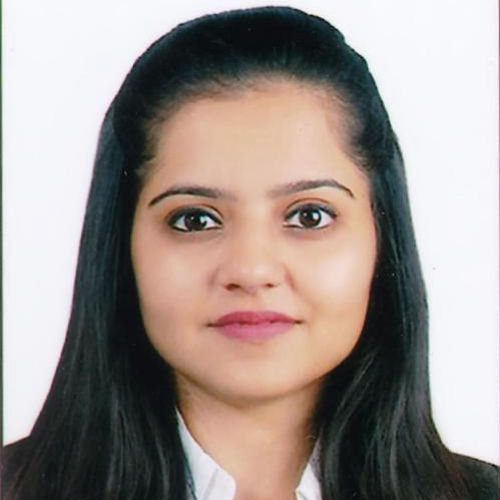Table of Content +
The Delhi Police Head Constable (AWO/TPO) 2025 exam, conducted by SSC, is for candidates who want to join as Assistant Wireless Operators or Tele-Printer Operators. The notification was released on 24th September 2025. To prepare well, candidates should check the full syllabus and exam pattern for the written and physical tests. This article gives the complete syllabus and pattern for easy reference.
What is Delhi Police Head Constable (AWO/TPO) Exam Pattern 2025?
The Delhi Police Head Constable (AWO/TPO) Exam Pattern 2025 includes a Computer-Based Test (CBT) with objective questions and a Physical Endurance & Measurement Test (PE&MT) with height, chest, and weight requirements.
| Stage | Details |
|---|
| Written Test (CBT – Computer-Based Test) | Objective-type exam conducted online. |
| Physical Endurance & Measurement Test (PE&MT) | Candidates must meet specific height, chest (for male candidates), and weight requirements |
Candidates must also qualify the Physical Endurance & Measurement Test (PE&MT) to proceed further in the recruitment process.
Delhi Police Head Constable (AWO/TPO) Syllabus Overview
Delhi Police Head Constable (AWO/TPO) Syllabus has two phases: Written Test (CBT) and Physical Endurance & Measurement Test (PE&MT). Below is the detailed overview of the syllabus and exam pattern for the CBT.
| Particulars | Details |
|---|
| Commission | Staff Selection Commission (SSC) |
| Exam Name | Delhi Police Head Constable (AWO/TPO) Exam |
| Mode of Exam | Online (CBT) |
| Marking Scheme | +1 for each correct answer, there is no negative marking for wrong answers |
| Selection Process | Written Exam + Physical Endurance & Measurement Test (PE&MT) |
| Official Website | ssc.gov.in |
Attempt the Delhi Police Head Constable Mock Test For Free
What is Delhi Police Head Constable (AWO/TPO) CBT exam pattern?
The Delhi Police Head Constable (AWO/TPO) CBT is an online test of 100 questions to be completed in 90 minutes, covering General Awareness, General Science, Mathematics, Reasoning, and Computer Fundamentals.
| Subjects | Questions | Marks |
|---|
| Part-A: General Awareness | 20 | 20 |
| Part-B: General Science | 25 | 25 |
| Part-C: Mathematics | 25 | 25 |
| Part-D: Reasoning | 20 | 20 |
| Part-E: Computer Fundamentals, MS Excel, MS Word, Communication, Internet, WWW, and Web Browsers | 10 | 10 |
| Total | 100 | 100 |
- The Delhi Police Head Constable (AWO/TPO) Written Exam (CBT) will be conducted online in both English and Hindi.
- The exam consists of 100 questions and will be held for 90 minutes.
- There will be negative marking of 0.25 marks for each wrong answer.
What is Delhi Police Head Constable CBT Syllabus?
The Delhi Police Head Constable (AWO/TPO) CBT Syllabus 2025 covers General Awareness, General Science, Mathematics, Reasoning, and Computer Fundamentals, followed by PE&MT with race, long jump, high jump, height, chest, and medical standards.
(A) General Awareness
This section tests the candidate's general awareness of the environment around them and its application to society. It will include questions about India and its neighboring countries, covering various aspects such as history, culture, geography, and economics.
| Topics | Description |
|---|
| Current Affairs | National and international events and developments |
| History | Ancient, Medieval, and Modern India |
| Geography | Indian and World Geography, Climate, Natural Resources |
| Economy | Economic policies, Banking system, Government schemes |
| Polity | Indian Constitution, Fundamental Rights, Polity |
| Scientific Research | Major developments in science and technology |
(B) General Science
The General Science section will test the candidate's knowledge in Physics, Chemistry, and Biology.
| Topics | Description |
|---|
| Physics | Topics such as Thermodynamics, Mechanics, Newton's Laws, Gravity, Pressure, Sound, Heat & Temperature, Electronics, Magnetism, Ohm's Law, Fiber Optics |
| Chemistry | Topics related to the Chemistry of everyday life, Acids (Sulphuric acid, Hydrochloric acid), Atomic Numbers, Electrochemistry, Chemical reactions, and Catalysts |
| Biology | Topics related to Biology, such as plant and animal physiology, human anatomy, and health sciences |
(C) Mathematics
This section will test mathematical concepts such as Number Systems, Algebra, Geometry, and Mensuration.
| Topics | Description |
|---|
| Number Systems | Whole Numbers, Fractions, Decimals |
| Ratio & Proportion | Understanding ratios, proportions, and their applications |
| Percentages | Calculating percentages in various scenarios |
| Averages | Mean, Median, Mode |
| Interest | Calculating simple and compound interest |
| Profit, Loss & Discount | Business Mathematics, Profit & Loss, Discount calculations |
| Algebra | Equations, Surds, Indices, Graphs |
| Geometry | Shapes, angles, theorems, and properties of figures |
| Mensuration | Area, Volume, Perimeter of 2D & 3D Shapes |
| Trigonometry | Trigonometric ratios and identities |
| Data Interpretation | Bar Graphs, Pie Charts, Line Graphs, Tables |
| Simplification | BODMAS, Approximation |
(D) Reasoning
The Reasoning section assesses the logical and analytical thinking ability of the candidate.
| Topics | Description |
|---|
| Non-Verbal Reasoning | Identifying patterns, relationships in figures |
| Analogy | Word and number-based analogies |
| Alphanumeric Series | Series of letters and numbers, sequence identification |
| Number Series | Identifying patterns in numerical sequences |
| Critical Thinking | Understanding problems, applying logic to find solutions |
| Coding-Decoding | Word/letter/number-based coding-decoding questions |
| Input-Output | Problem-solving based on input-output logic |
| Blood Relations | Identifying family relations and solving problems |
| Syllogisms | Logical reasoning through statements |
| Tables | Identifying patterns and relationships in tables |
| Directions/Ranking Test | Understanding positional relationships and rankings |
| Venn Diagrams | Solving problems using Venn diagrams |
| Seating Arrangement | Solving seating arrangement puzzles |
| Coded Inequalities | Solving problems based on inequalities |
| Data Sufficiency | Determining sufficient information for solving problems |
(E) Computer Fundamentals, MS Excel, MS Word, Communication, Internet, WWW, and Web Browsers
This section evaluates a candidate's computer literacy and understanding of basic computer applications.
| Topics | Description |
|---|
| Word Processing | Basics of Word Processing, Text Creation, Formatting Text, Document Presentation |
| MS Excel | Understanding Excel functions, cells editing, and formulas |
| MS Word | Formatting documents, editing, and presentation features |
| Communication | Basics of Email, Sending and Receiving Emails |
| Internet, WWW, and Web Browsers | Internet services, URL, HTTP, FTP, Web Browsing, Search Engines, e-Banking |
| Networking and Cybersecurity | Understanding computer networks, Cybersecurity basics |
| Cyber Security & Malware | Understanding risks, viruses, and secure browsing practices |
What is Delhi Police Head Constable Physical Test?
The Delhi Police Head Constable Physical Test includes the Physical Endurance Test (PET) with race, long jump, and high jump standards varying by age and gender, the Physical Measurement Test (PMT) with height and chest requirements, and medical standards including sound health, proper eyesight, and no color blindness.
A) Male Candidates:
The Physical Endurance Test for male candidates (including ex-servicemen and departmental candidates) is as follows:
| Age Group | Race (1600 meters) | Long Jump | High Jump |
|---|
| Up to 30 years | 7 minutes | 12½ feet (12'6") | 3½ feet (3'6") |
| Above 30 to 40 years | 8 minutes | 11½ feet (11'6") | 3¼ feet (3'3") |
| Above 40 years | 9 minutes | 10½ feet (10'6") | 3 feet |
Note: Candidates who qualify the race will be eligible for the Long Jump and then the High Jump. Long Jump and High Jump must be cleared within three attempts. There will be no appeal against disqualification in race, long jump, and high jump.
B) Female Candidates:
The Physical Endurance Test for female candidates (including departmental candidates and widow/divorced/judicially separated women candidates) is as follows:
| Age Group | Race (800 meters) | Long Jump | High Jump |
|---|
| Up to 30 years | 5 minutes | 9 feet (9') | 3 feet (3') |
| Above 30 to 40 years | 6 minutes | 8 feet (8') | 2½ feet (2'6") |
| Above 40 years | 7 minutes | 7 feet (7') | 2¼ feet (2'3") |
- Note 1: Candidates who qualify the race will be eligible for the Long Jump and then the High Jump. Both the Long Jump and High Jump must be cleared in one of the three chances provided.
- Note 2: Female candidates who are pregnant, have recently given birth, or have suffered a miscarriage at the time of PE&MT will be temporarily unfit for the test. They will be re-examined six weeks after the confinement period, provided they submit a medical certificate from a registered medical practitioner.
What is Physical Measurement Test (PMT)?
The Physical Measurement Test (PMT) for Delhi Police Head Constable applies to candidates who pass the PET, requiring males to have 170 cm height (relaxable by 5 cm) and 81-85 cm chest (relaxable by 5 cm), and females 157 cm height (relaxable by 5 cm).
A) For Male Candidates:
| Measurement | Requirement | Relaxation |
|---|
| Height | 170 cm | Relaxable by 5 cm for residents of hill areas or sons of Delhi Police personnel |
| Chest | 81 cm (unexpanded) – 85 cm (expanded) | Relaxable by 5 cm for residents of hill areas or sons of Delhi Police personnel |
B) For Female Candidates:
| Measurement | Requirement | Relaxation |
|---|
| Height | 157 cm | Relaxable by 5 cm for residents of hill areas or daughters of Delhi Police personnel |
Medical Standards
The candidates must meet the following medical standards:
- Health: Candidates should be of sound health, free from disease, defects, or deformities.
- Eyesight:
- Better eye: 6/6 without glasses.
- Worse eye: 6/36 corrected with glasses to 6/9 or 6/12 without glasses.
- Candidates should not have color blindness.
Delhi Police Head Constable Syllabus Download PDF
Candidates can download the Delhi Police Head Constable (AWO/TPO) syllabus PDF for reference below.
Download Delhi Police Head Constable (AWO/TPO) Syllabus PDF







